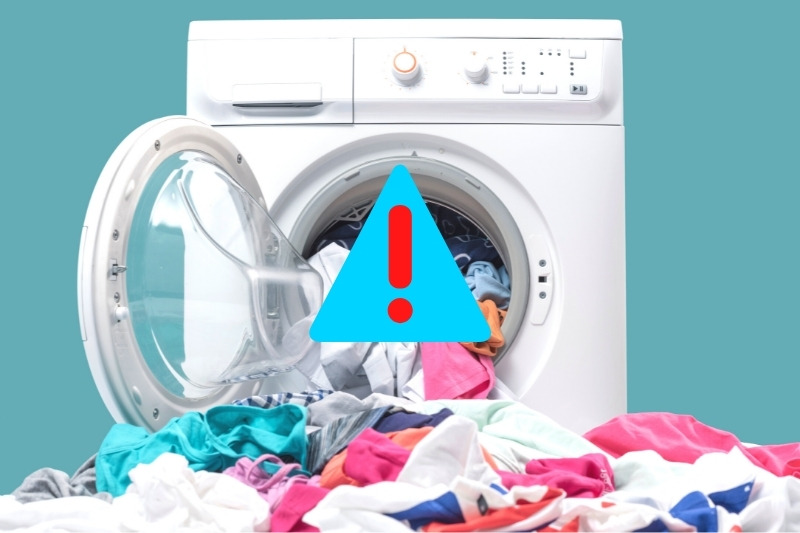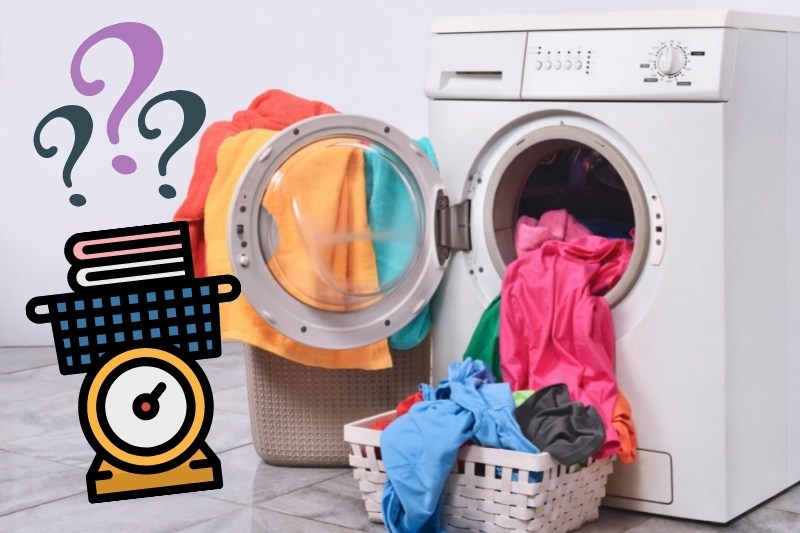We’ve all been there, cramming as many clothes as we can into a wash so that the door barely shuts. Sometimes you’re short on time and you really need your washing done right away.
But is it possible to overfill a washing machine? And if so, is it really that bad or are the horror stories just old wives’ tales?
In this article, we explain how much you should fill a washing machine and what happens when you overload it.
How Much Should You Fill a Washing Machine?
An easy way to check whether your machine is correctly filled is the hand test. There should be enough space between the top of your clothes and the top of your drum to get your hand in sideways, not flat.
If you have to reach up and squeeze your hand in, and it only lays flat, your washing machine is too full.
However, this method is not perfect as you can still exceed the maximum weight capacity, even if the drum isn’t full. The maximum weight is indicated on each machine, so it’s a good idea to weigh your load if you can.
In addition to this, the maximum weight doesn’t apply to all wash cycles. If you refer to the instruction manual for your machine, you will likely find a guide that details all of the programmes including the temperature, spin speed, duration and maximum weight.
For example, in a machine that has a 9 kg maximum capacity, the instruction manual will typically recommend a maximum weight of around 3.5 kg for a fast wash. So, it’s a good idea to consult the manufacturer’s instructions to be extra safe.
How Can You Tell if Your Washing Machine Is Overloaded?

In extreme cases the machine may stop entirely and shut down as a safety mechanism.
More likely, your clothing will come out unwashed, with stains and marks left behind. Not only can overloading lead to stains not being properly treated, it may also leave detergent marks on your clothes as the detergent is unable to dissolve.
Clothes may even be wetter than usual as the water is absorbed and is unable to then drain away properly.
Another indication is something known as a clothes snake, which is when your clothes become entangled. Detergent can’t get to the parts of the clothes that are knotted together so they don’t get clean.
What Happens if You Overload Your Machine?

As previously mentioned, your clothes will not be cleaned because they don’t have enough room to move around. Plus, the recommended amount of detergent is for a normal-sized load, so it won’t be enough if you put too many clothes in.
When your clothes don’t get completely clean in the first wash, they may have to be washed again which can wear out your clothes. Not to mention, doing so uses up more water and electricity and leads to more expensive bills.
Clothes can become caught in the door seal if they’re being pushed up against it, which can lead to tearing.
There can also be damage to the machine itself. If the detergent and fabric softener doesn’t have enough room to dissolve, this can cause build up in the drum. This residue can then stain clothes in subsequent washes.
In more extreme cases, the heavy drum can put pressure on the machine’s bearings causing it to eventually break down completely.
Can You Underload a Washing Machine?
As with overloading your machine, you can also put too little laundry in, which can be bad for the machine.
At best it’s a waste of water and electricity leading to higher bills. At worst, your machine ends up banging and vibrating as the lack of weight throws it off balance.

In The Wash is your guide to the best laundry and cleaning products, tips and tricks. Our mission is to solve the UK’s cleaning and laundry dilemmas!






